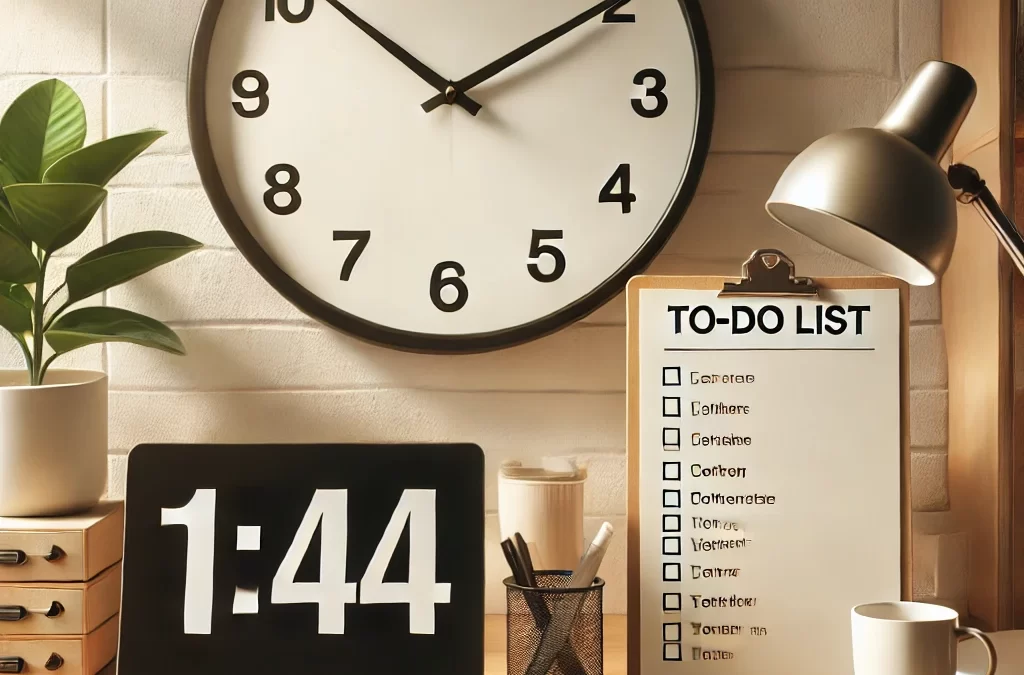Every day, you have exactly 1,440 minutes—no more, no less. But how often do you stop and think about how you’re using them? If procrastination is a habit, it’s time to stop wasting your 1440. Those minutes are precious, and when you let them slip by, you lose the chance to make meaningful progress toward your goals. The real danger isn’t just the lost time—it’s missing out on your potential, your dreams, and the sense of fulfillment you deserve.
So, how do we tackle this beast called procrastination? It starts by learning to value your 1440 and developing strategies to stop wasting them.
What Does It Mean to Master Your 1440?
Before diving into the nuts and bolts of stopping procrastination, let’s break down what it means to master your 1440. The idea comes from understanding that you have 1,440 minutes in a day, and each of those minutes matters. Whether it’s five minutes scrolling through your phone or 30 minutes delaying an important task, those lost moments accumulate. In fact, wasted minutes add up to wasted days, months, or even years.
Procrastination is the #1 enemy of mastering your time. It’s sneaky and destructive, often disguised as “taking a break” or “just doing this one quick thing.” Before you know it, your to-do list is still untouched, but your social media feed is all caught up.
If you’re serious about stopping procrastination for good, it’s time to break this cycle. Here’s how:
1. Identify What’s Causing Your Procrastination
Procrastination isn’t just about being lazy or unmotivated. Often, there’s something deeper at play. Are you feeling overwhelmed by the task at hand? Or maybe it’s fear—fear of failure, or even fear of success? In the 1440 framework, one key to success is identifying distractions and understanding what’s pulling you away from your goals.
Try This:
Take a moment to pause and reflect. Write down the task you’ve been avoiding. Now ask yourself, Why am I avoiding this? Once you get to the root of the problem, it becomes much easier to tackle. You might find that the task isn’t as scary as you’ve built it up to be.
2. Set Small, Manageable Goals (S.T.E.P.S. Method)
One of the biggest procrastination traps is looking at your to-do list and feeling completely overwhelmed. That’s where the S.T.E.P.S. method from the 1440 framework comes in. It encourages you to start small and focus on consistent action, rather than perfection. Remember, each task is just a series of small steps.
Try This:
Break your task down into its smallest components. For example, if you’re writing a report, don’t think about the entire report. Think about just writing the introduction first. Once you’ve got that done, move to the next small piece.
3. Act with Intention (G.O.A.L.S. Method)
Aligning your daily actions with your long-term goals is crucial for overcoming procrastination. When you’re acting with intention, you’re more likely to stay focused on what matters and less likely to get distracted by time-wasters.
The G.O.A.L.S. method emphasizes acting with purpose by organizing priorities, limiting distractions, and staying focused. It’s easy to get derailed when you’re juggling too many tasks, so focus on one at a time.
Try This:
At the start of each day, write down your top three goals. These should be things that really matter and align with your long-term vision. Prioritize these, and don’t move on to the next until you’ve completed the first.
4. Interrupt Distractions (F.O.C.U.S. Method)
Distractions are everywhere—your phone, email, coworkers, or even your own wandering thoughts. The F.O.C.U.S. method teaches you how to identify and minimize distractions before they sabotage your productivity. To stop procrastination, it’s crucial to get a handle on what’s pulling your attention away.
Try This:
Create a distraction-free zone when it’s time to work. This could mean turning off notifications, closing unnecessary tabs, or physically removing yourself from environments where you tend to procrastinate. Set a timer (use the Pomodoro technique: 25 minutes of focused work followed by a 5-minute break) and commit to sticking with it. For more details on how the Pomodoro technique can improve your focus and productivity, check out this comprehensive guide to the Pomodoro Technique.
5. Maximize Moments (P.R.E.S.E.N.T. Method)
A huge part of procrastination comes from not being fully present in the moment. Whether you’re thinking about past mistakes or future tasks, it keeps you from focusing on what you should be doing right now. The P.R.E.S.E.N.T. method encourages you to engage fully with the task at hand and let go of distractions.
Try This:
Before starting a task, take a few deep breaths and center yourself. Set an intention to focus solely on the task. Don’t think about what comes next or what you could be doing instead. Practice gratitude for having the time and opportunity to work on this task—this shift in mindset can do wonders for staying present.
6. Create Long-Term Habits (Establish Habits with S.T.E.P.S.)
Stopping procrastination isn’t just about a one-time effort—it’s about building habits that last. By creating systems that support productivity, you make it easier to stay on track day after day. The 1440 framework’s S.T.E.P.S. method is all about starting small, tracking your progress, and embedding those habits into your daily routine.
Try This:
Pick one habit that will help you eliminate procrastination and focus better. Maybe it’s setting a strict work schedule or using a habit tracker to monitor your daily progress. The key is consistency. Don’t worry about being perfect—focus on showing up each day.
7. Review, Reflect, and Adjust
No system is perfect, and part of stopping procrastination is being flexible. Regularly reviewing your goals, distractions, and habits helps you adjust your approach as needed. When you stay committed to this process, you’ll start noticing big changes in how you spend your 1440 minutes.
Try This:
Set aside time each week to review your progress. What worked? What didn’t? Celebrate small wins, and make adjustments where necessary. This isn’t about being hard on yourself; it’s about learning what works best for you.
Don’t Let Procrastination Steal Your 1440
Procrastination is one of the biggest thieves of time. It tricks us into thinking we’ll get more done later, but later often turns into never. By taking small, intentional steps to master your time—your 1440—you can finally break free from the procrastination cycle.
The T.I.M.E. framework (Target your goals, Interrupt distractions, Maximize moments, Establish habits) is your roadmap for making the most of every minute, every day. Don’t wait for tomorrow to start—take control of your 1440 today. After all, time waits for no one, and the only way to overcome procrastination is by deciding that your time is worth more than the temporary comfort of delay.

